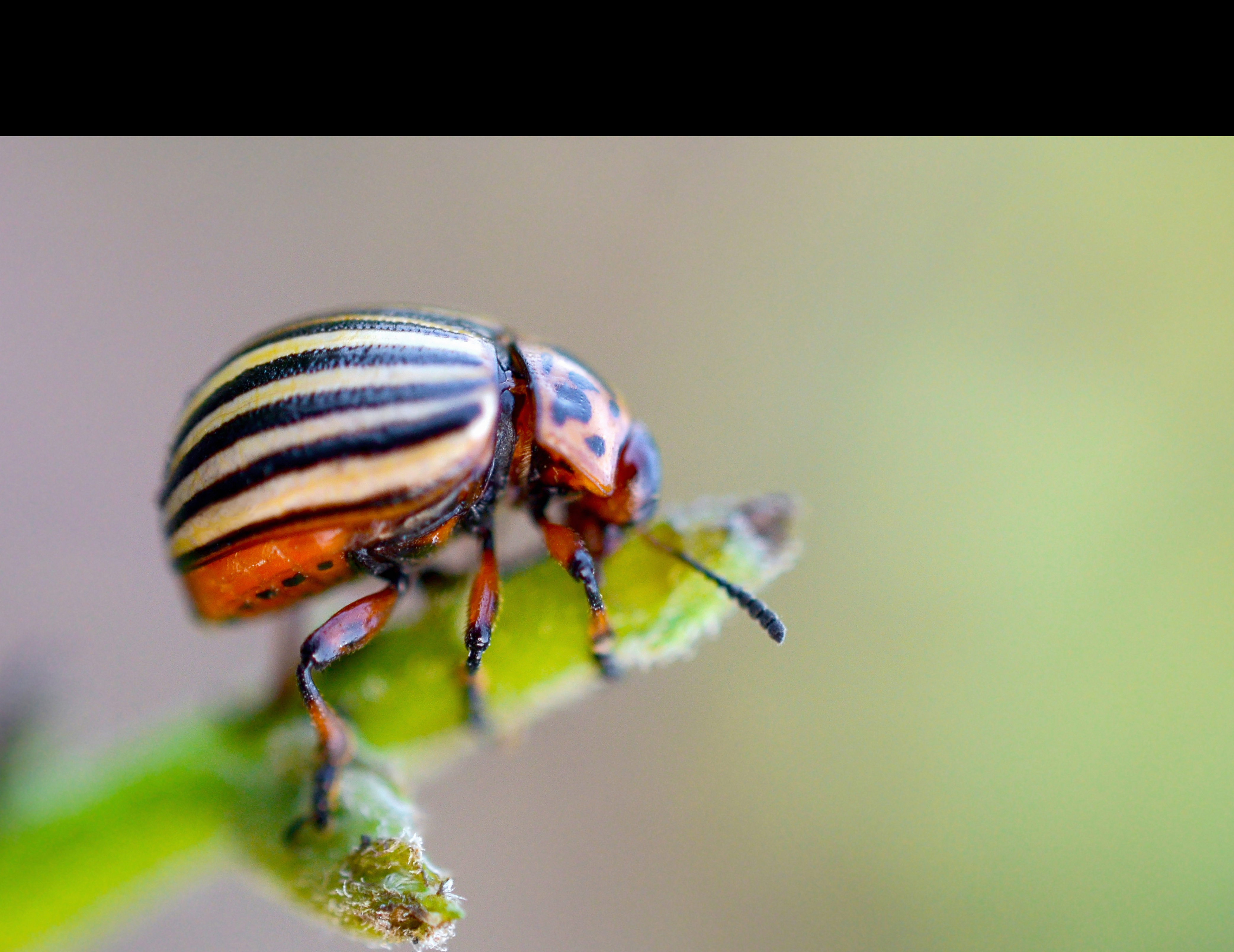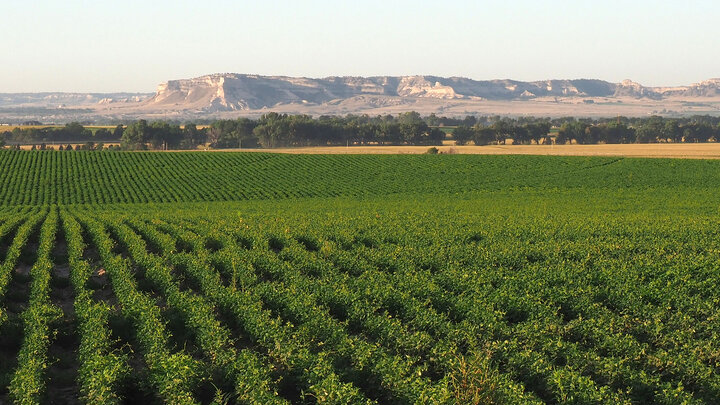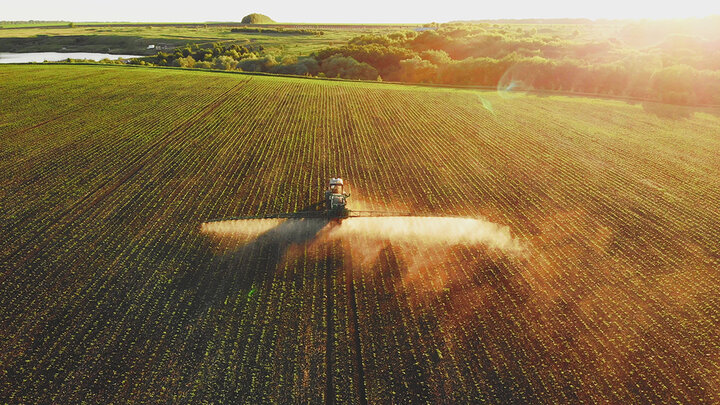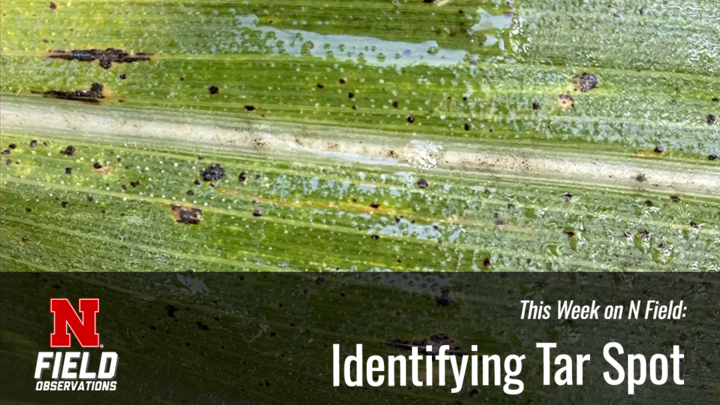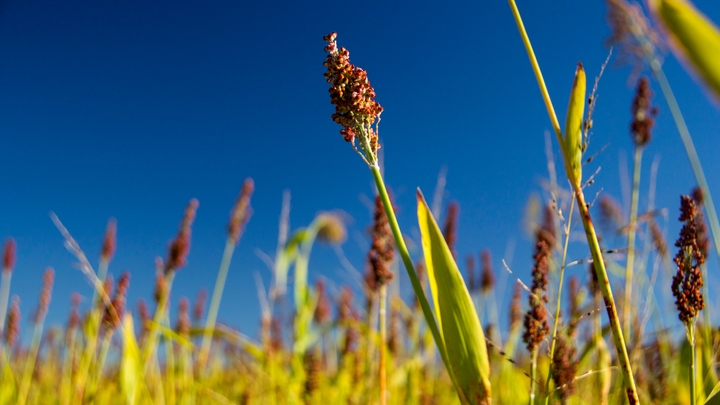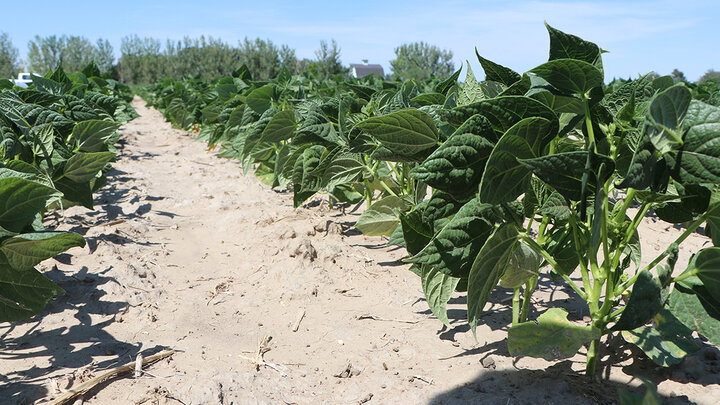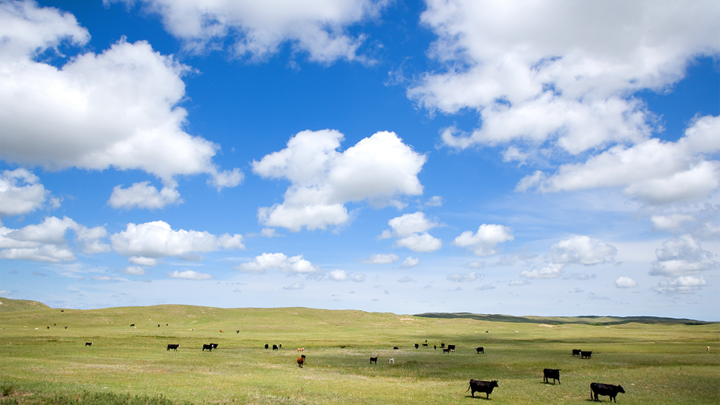Beneficial Insects
Predators
Use of Predators to Control Insect Pests in Potato
(prepared by Dr. Gary L. Hein, UNL Extension Entomologist)
The predators sometimes can be used for controlling insect pests in a potato field. Oftentimes, insect management tactics are going to change depending on a grower's market, seed versus table versus chipping potatoes. When looking at predatory insects, there may be methods that fit into any one of these market types, but certainly table stock is where these methods are going to be most applicable. Certainly, they are less applicable to seed production because, with respect to viruses. It's tougher to make them work since the threshold is essentially present or absent. With that in mind, the following is a general exposure to some possibilities. This issue has come partially due to the chemical resistance developed by the Colorado potato beetle (CPB).
Lady beetles, or lady bugs, are recognized as beneficial insects in most areas. There are several species of lady beetles in this region. The convergent ladybeetle is one that is seen most often. In the last few years, a recent introduction into Nebraska, is becoming more and more prevalent. C-7, or the 7-spotted lady beetle, is much bigger than the typical lady beetle usually seen here. Lady beetles will primarily feed on aphids, but they will also feed on CPB eggs and perhaps mites. Lady beetles lay their eggs on leaves. Lady beetle larvae are very voracious predators much like the lacewing larvae and will feed on aphids and other small insects very well.
The green lacewing is a very common predator, primarily feeding on aphids but it will feed on other small larvae. The green lacewing lays its egg on stalks from which the eggs are suspended off the leaf. Once the larvae hatches from that egg, it crawls down. The purpose of the stalks is to protect the egg from its brothers and sisters. They are voracious, will eat the first thing that they contact and will eat other eggs. They have sickle-shaped mouth parts on the front of the head. They poke these into an aphid and inject digestive juices. The contents are then sucked out of the attached insect. They will take on anything smaller than themselves and perhaps some things that are larger.
The two-spotted stink bug is noted as a very good CPB larvae predator. They feed on CPB eggs and perhaps other insects.
The big eyed bugs have piercing, sucking mouth parts, that stick in and suck the contents out of its prey. They will feed on small larvae, aphids, some other fairly small insects, and CPB eggs. Adults are 3/15" long.
Nabids are very common in potato and alfalfa fields. They have piercing, sucking mouthparts. They are a little bit bigger than big-eyed bugs and will be about 3/8" long. Nabids will eat larger insects and larvae which include CPB and cutworm larvae. They also feed on CPB eggs and perhaps aphids.
The minute pirate bug is another voracious predator. Its size is about 1/8". It is probably one of the more effective predators. These insects have piercing-sucking mouth parts. They can have a painful bite and are very annoying when present in high numbers.
Spiders can be an important predator. A number of species may be found in potatoes. Spiders are general predators and will feed on just about any insect that they can catch.
The adults of Syrphid or Hoover flies will lay their eggs near aphid colonies, and the larvae will feed on the aphids. The adults have a distinctive flying pattern. They keep hovering in the air and move from spot to spot. The maggot is usually greenish. When the maggots get into an aphid colony, they can clean them up fairly rapidly. Unfortunately with this particular predator, it isn't common until aphid populations are fairly high. Colonies have to be fairly well established before there are significant numbers.
We need to be aware of the presence of these natural predators and take advantage of them when possible. In most situations, when an insect population is approaching an economic threshold level or a significant level, the best thing is not to wait for the predators to act because they are usually slow at controlling a population. A lot of times in agricultural crops, because the thresholds are relatively low, one can't wait long enough for them. But there are exceptions, there are situations where you can wait for these predators to be of some benefit. In many situations, background predator populations can keep secondary pests in check. One thing that can be done to increase the effectiveness of predators is to minimize the use of insecticides. Use insecticides only when necessary. This requires monitoring pest populations. Unnecessary applications may result in flaring secondary pests. Flaring aphids results from an insecticide application that wipes out all of the natural enemies. Even when there is 99% or greater control of aphids, there are still a number of them out there and they will return. They will return because their reproductive time is short, each individual can produce a large number of aphids, and the natural enemy complex has been completely destroyed. Aphids will come back without environmental or predatory restrictions. As a result, the aphid populations will flare, increase very dramatically.
There are a number of other factors that can be used to try to assist predators. In the future, transgenic varieties will increase the importance of predators to control pest insects. For CPB, a Bt-insecticide can be used. These insecticides will affect the early instar CPB, but Bt will not adversely affect the predators which will be retained to control aphids and other pests.
Green Lacewings
Over the years, many growers have asked me about the use of beneficial insects in potato production. One of the key pest targets are aphids, especially the green peach aphid. The green peach aphid is devastating because it carries the potato leaf roll virus that seriously affects seed production and the quality of potatoes used for processing into French fries (pommes frites) and potato chips (crisps). More on the green peach aphid and viral vectoring in later columns.
Are lacewings affective in controlling aphids? Are they commercially available? Are commercially sources reliable?

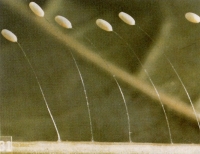

Using predatory insects may aid delaying insecticide application and lessen the number of needed treatments. Other advantages of predatory insects, both natural and released populations, are lowering the risk of chemical resistance by pests and suppression of secondary pests.
The performance of natural populations of predatory insects has been somewhat documented and varies with different situations. For instance, beneficial insects work well in perennials such as alfalfa but less well in semi-annuals such as potato. The major drawback is their lag time to respond to rapidly growing prey (pest) populations. The crop may have been economically damaged before the predator insects build up sufficiently to reduce the pest population.
Common Green Lacewing (Chrysoperla carnea) is readily available commercially both in the USA and Canada, and is considered the best for row crops and in drier areas than the green lacewing (C. rufilabris) that is also available. The common green lacewing specializes in feeding on aphids. Adults are reared in insectaries and eggs are sold mixed with a carrier. The eggs should be dispersed as soon as they arrive since the larvae are cannibalistic. Don't release them near ants since they will eat the eggs. The main problem with using these predators has been the method of dispersal on a large scale. Recently, however, a successful method was developed called the BioSprayer used with an adhesive, BioCarrier. The BioSprayer can be mounted to a vehicle and BioCarrier is used to adhere the eggs to potato leaf surfaces.
Life Cycle -- Green lacewings are found naturally in Nebraska and I've observed them in potato fields. Lacewing larvae eat CPB, GPA and potato psyllid; adults feed on nectar, pollen and aphid honeydew. They disperse through the field as adults. Pupae overwinter and an adult emerges in late March and early April. Eggs are laid in April and larvae emerge around the end of the month. The larvae change to adults after a couple of weeks. The life cycle is about one month. There are two to four generations produced during the growing season. The larvae are voracious predators.
Appearance -- Adults are colored light or pale green and golden eyes. The wings are lacy -- large, clear, membranous with green veins and margins and are held over the length of the body, about ¾ inch long. Antennae are long and hair-like. They are attracted to and feed on aphid honeydew, laying eggs nearby or near other prey. The eggs are white and each is held at the end of a hair-like stalk attached to the leaf. Larvae, called aphid lions, are able to eat up to 600 aphids each). They look like tiny alligators and are creamy colored, mottled with brownish red markings; they are about ¼ inch long. They have well-developed legs and large pincers with which to suck out bodily fluids from prey. The larvae spin out a cocoon (pupa) on the underside of leaves.
Pesticide Tolerance -- Lacewings may have tolerance for many insecticides. In the lab, tolerance developed to pyrethroids (Ambush, Pounce, etc.), organophosphates (Guthion, Imidan, Monitor, etc.) and carbaryl (Sevin).
Lady Beetles
Another key pest target for predatory insect is the Colorado potato beetle. One of the most ferocious eater of the potato beetle is a cute looking and docile predatory insect the lady(bird) beetle. Lady beetles are readily available commercially in North America and I'm sure throughout the world as well. They are heavily used by the garden industry and by organic growers. Many insecticides especially those used for the Colorado potato beetle are harmful to the predators especially those that feed on aphids such as the green lacewings outlined in last June's column.
Lady Beetles are commercially available BUT the species commonly sold (Hippodamia convergens) is not the preferred lady beetle for effective bio-control of pests. There are over 400 species of lady beetles in North America. The one sold is the convergent lady beetle that is captured while overwintering in migratory hordes, many in California. These beetles are captured and shipped while in a dormant state (diapause) and it takes about a month before they will lay eggs. Also, they tend to disperse away from the field in which they were placed. Improved techniques in pre-feeding lady beetles prior to release has improved egg maturation and earlier deposit. Several sources now sell these "pre-conditioned" beetles but are ten-fold more expensive. It is still recommended to release them only in large fields.
I found a couple of sources, in Indiana and Quebec, of one of the best species of lady beetle, Coleomegilla maculata (pink spotted lady beetle). This species is a particularly voracious egg predator of Colorado potato beetle. They're dark pink to red with lots of large black spots, and are often found in or near alfalfa and grain (esp. Wheat) fields. Populations build up in these fields in late spring and summer. Both adults and larvae eat eggs, and the larvae will eat C. potato beetle larvae, green peach aphid nymphs and adults, and European corn borer eggs. The adults will also feed on nectar, pollen and GPA honeydew.
The seven-spotted lady beetle (Coccinella septempunctata) is another species which is voracious C. potato beetle and green peach aphid predator. It was introduced into the USA from Europe and is found throughout North America. This 7-black spotted orange lady beetle appears in potato fields everywhere and is the best known of the predators. Although not yet commercially available, this species has recently been mass reared.
Life Cycle -- Lady beetles overwinter as adults in debris, fallen leaves, building cracks, under rocks, and in mulch. Some migrate for winter covering at high altitudes as much as 9,000 ft. These include C. maculata (pink spotted), C. septempunctata (seven-spotted) and H. convergens (convergent) lady beetles. During overwintering, they go through a dormant or inactive period as adults called diapause. In spring, as weather warms, they break diapause and become active. Adults resume feeding and begin egg production in crops, especially alfalfa and winter wheat in Nebraska. They will move into potato fields looking for Colorado potato beetle eggs and green peach aphid nymphs. In these fields and near prey, eggs are deposited. Eggs hatch after 3-7 days and the first generation of larvae are eating by the end of May. Although the adult is most recognized as a predator, the larvae are voracious eaters of C. potato beetle eggs and aphid nymphs. Each larva can consume 500 to 1000 green peach aphids during its 2-4 weeks of growth. Pupae are formed in the dining area and, after 5-7 days, the adult emerges to eat and lay eggs. There are 2-5 generations per season and a life cycle lasts about a month.
Appearance -- There are hundreds of species of lady beetles in North America alone. Most are beneficial to potato production eating many insect pests. The two most voracious and common are Coleomegilla maculata (pink spotted) and Coccinella septempunctata (seven-spotted). The adult of the pink spotted ladybeetle's body is oblong and the wing covers are deep pink to red with 12 large black irregular spots that may converge. The seven-spotted ladybeetle adult is round-oval and domed; its wing covers are orange with seven circular black spots. Adults are about ¼ inch long and are found from April to late September. A female will lay 200-1000 eggs. Eggs are spindle-shaped or oblong, yellow to orange-red, and clustered (less than 20) on leaf surfaces. They are usually found near prey, aphids and C. potato beetle. The eggs look similar to C. potato beetle eggs but these are larger, darker red-orange, and are more clustered, 30-50 eggs. Colorado potato beetle eggs are only found on solanaceous plants such as potato and nightshades while ladybeetle eggs will be found there and in other crops (alfalfa, wheat) and weeds, wherever prey is nearby. The ladybeetle larvae are elongated and dark with a slightly pointed rear. Their legs stick out from the side as if they are bow-legged. Their color is gray to black and have spotting of yellow, orange or blue. The pupae are round and hang for the leaf surface attached in the rear. They are dark usually with spots.
Pesticide tolerance by lady beetles to insecticides has not been demonstrated.
Stink Bugs
Support for the release of commercially obtained predators is primarily anecdotal and theoretical; there is little, if any, scientific documentation supporting the value of releasing bought insects. Releasing predatory insects does NOT guarantee pest control, NOR replace scouting, threshold adherence and other good Integrated Pest Management (IPM) practices. Growers going into bio-control need to have realistic expectations that the method may not do the job alone. "Use is not discouraged, but a realistic expectation of the potential benefits is needed." (Dr. Gary Hein, Univ. of Nebraska Extension Entomologist.)
Although early green peach aphid populations are not high enough to attract natural populations of predators, these same predators also feed on Colorado potato beetle which usually appear earlier. Therefore, early release of predators for Colorado potato beetle control may delay the need for early season green peach aphid control and allow fewer and later insecticide applications against aphids.
In the absence of stink bugs, lady beetles and other predators after insecticide application, green peach aphid populations often flare up in potato fields.
The new transgenic clones of potato varieties would not affect the predatory insects since they do not feed on foliage nor do they have the gut chemistry to be affected by the Bt genes.
Two-spotted and spined soldier stink bug (Perillus bioculatus and Podisus maculiventus) are specialist predators of beetle larvae, especially CPB. Other prey include cutworms and armyworms. They are found throughout North America, and I've often seen the adults sucking blood out of CPB larvae in potato fields. Other larval prey of importance to potato production are the European corn borer and cabbage looper. In Washington potato fields, released stink bugs reduced CPB populations by 50%. They are available commercially as adults; I found sources in Massachusetts, New Hampshire and Ontario. Cost, however, may be prohibitive for large scale addition to natural populations.
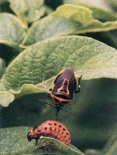
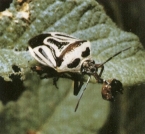

Life Cycle — The adult overwinters and, in spring, each female lays a thousand eggs. The eggs hatch into nymphs (not larvae) several days later. The nymphs feed on pest larvae, grow and form a hard shell. After reaching their final size, they become reproductive adults and lay eggs. There are 2-3 generations per season.
Appearance — Adults are about ½ inch long and have a broad shield-like body. The name comes from the release of a strong, unpleasant odor when adults are disturbed. The spined soldier stink bug adult is tan to pale brown with prominent spurs at the "shoulders" behind the head. Two-spotted stink bugs are usually yellow or red with a black "Y" on the back and two black spots on the "shoulders." Eggs are deposited in tight clusters of 20-30 on leaves and twigs. They are gray, cream or gold colored and are barrel-shaped. Young nymphs are red and black, and round instead of shield-like. As they grow, they become marked with yellow-orange, black and cream bands and patches. Nymphs are wingless but disperse in search of prey. Both adults and nymphs have beaks used for stabbing prey larvae and extracting the insides.
Pesticide Tolerance — Stink bugs are more susceptible to organophosphates and carbamates (Furadan, Sevin, etc.) than their prey but less susceptible to pyrethroids. In general, all natural insect predators are sensitive to insecticides and will be reduced dramatically.
Flowering Plants — As will be noted several times, the adult of many beneficial insects also feed on nectar and pollen. So, it's helpful to have wild flowers along fence rows and in the general area. This helps keep adults in the area looking for prey. For instance, flowering dandelions are a heavily used pollen source for lady beetles in late spring around potato fields. There are commercially available artificial foods and honeydew substitutes to enhance lacewing populations.

